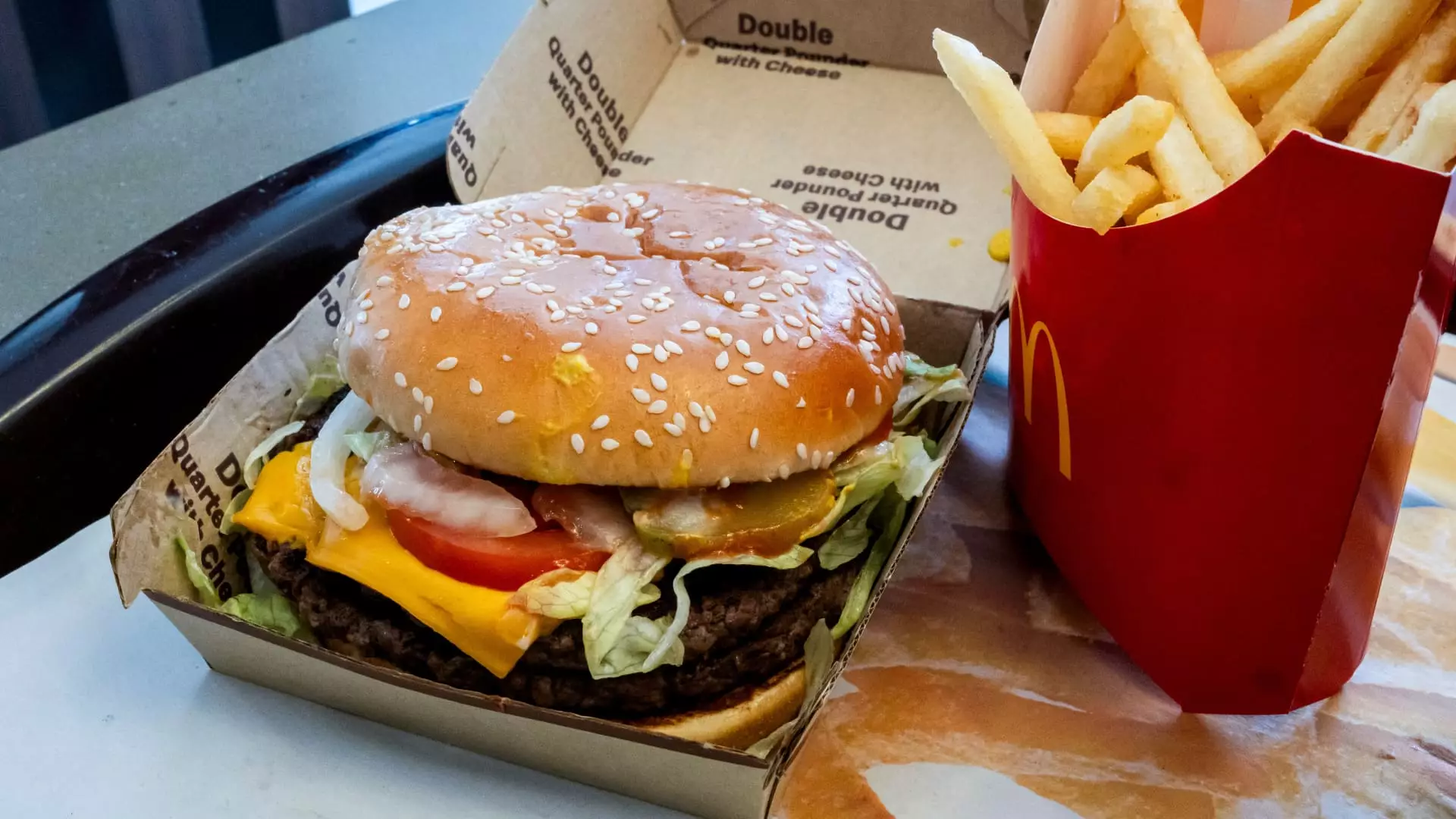Following a significant health scare, McDonald’s has announced the return of its popular Quarter Pounder burgers to approximately 900 restaurants across the United States. This decision comes after the fast-food chain removed the item from its menu due to a deadly E. coli outbreak that was linked to its food. The resurgence of the Quarter Pounder is tentatively poised to improve customer satisfaction and restore confidence in a brand that has faced significant scrutiny. Yet, as the beloved menu item re-emerges, it is crucial to consider the health implications and the impact on both the brand and its consumers.
Geographic Limitations and Ingredient Adjustments
The reinstatement of the Quarter Pounder is not without caveats. McDonald’s is temporarily modifying the recipe by excluding slivered onions, a potential source of contamination. This change affects a substantial segment of its restaurants, which account for about 20% of McDonald’s U.S. locations, particularly in states that include Colorado, Kansas, and Wyoming. The focus on certain geographical areas underscores the company’s strategy to contain risks while reinstating a popular menu item. By implementing this ingredient modification, McDonald’s aims to reassure customers that safety remains a top priority despite the ongoing investigation led by health authorities.
Health Authorities’ Investigations
As investigations continue, health authorities have shifted their focus towards slivered onions supplied by Taylor Farms, which are suspected to be the main culprit behind the outbreak. In a proactive response to this potential risk, McDonald’s has decided to stop sourcing onions from Taylor Farms until further notice. The attention on ingredients highlights the importance of transparency in food sourcing and the critical role suppliers play in maintaining public health standards. The Food and Drug Administration (FDA) is working diligently to determine whether the onions were indeed responsible, emphasizing the seriousness of food safety in the fast-food industry.
The Centers for Disease Control and Prevention (CDC) reported that the E. coli outbreak has resulted in 75 cases across 13 states, with hospitalized individuals facing significant health risks. Among these cases, some patients have developed hemolytic uremic syndrome, a potentially life-threatening condition. Tragically, the outbreak claimed the life of an older adult in Colorado, illuminating the severe consequences associated with foodborne illnesses. These alarming statistics reinforce the importance of stringent health protocols and the grave implications of lapses in food safety.
In light of these events, McDonald’s has taken a proactive stance in addressing consumer concerns. Joe Erlinger, the president of McDonald’s USA, publicly apologized to those affected by the outbreak, expressing regret for the distress caused. This acknowledgment is crucial for rebuilding consumer trust, especially when brand loyalty is closely tied to perceived safety and quality. As one of the largest fast-food chains globally, McDonald’s understands that maintaining customer confidence is imperative, not just for the continued success of specific menu items like the Quarter Pounder, but also for the overall integrity of its brand.
Future Implications and Financial Considerations
As McDonald’s prepares to report its third-quarter earnings, the financial implications of the outbreak are significant. The company’s stock has already seen a decline of 7% since the CDC’s announcement linking the E. coli outbreak to its restaurants. Investors and analysts are closely monitoring these developments, as the fallout from health crises can have lasting impacts on a company’s performance. Moving forward, it remains to be seen how effectively McDonald’s can recover its market position while ensuring that safety and quality assurance measures are prioritized.
As the Quarter Pounder prepares for a tentative return, McDonald’s must navigate a landscape fraught with risk and public scrutiny. The emphasis on ingredient safety, transparent communication, and customer reassurance will be paramount as they work toward regaining consumer trust and stabilizing their operations amidst ongoing health concerns.


Leave a Reply